Refund Guaranteed
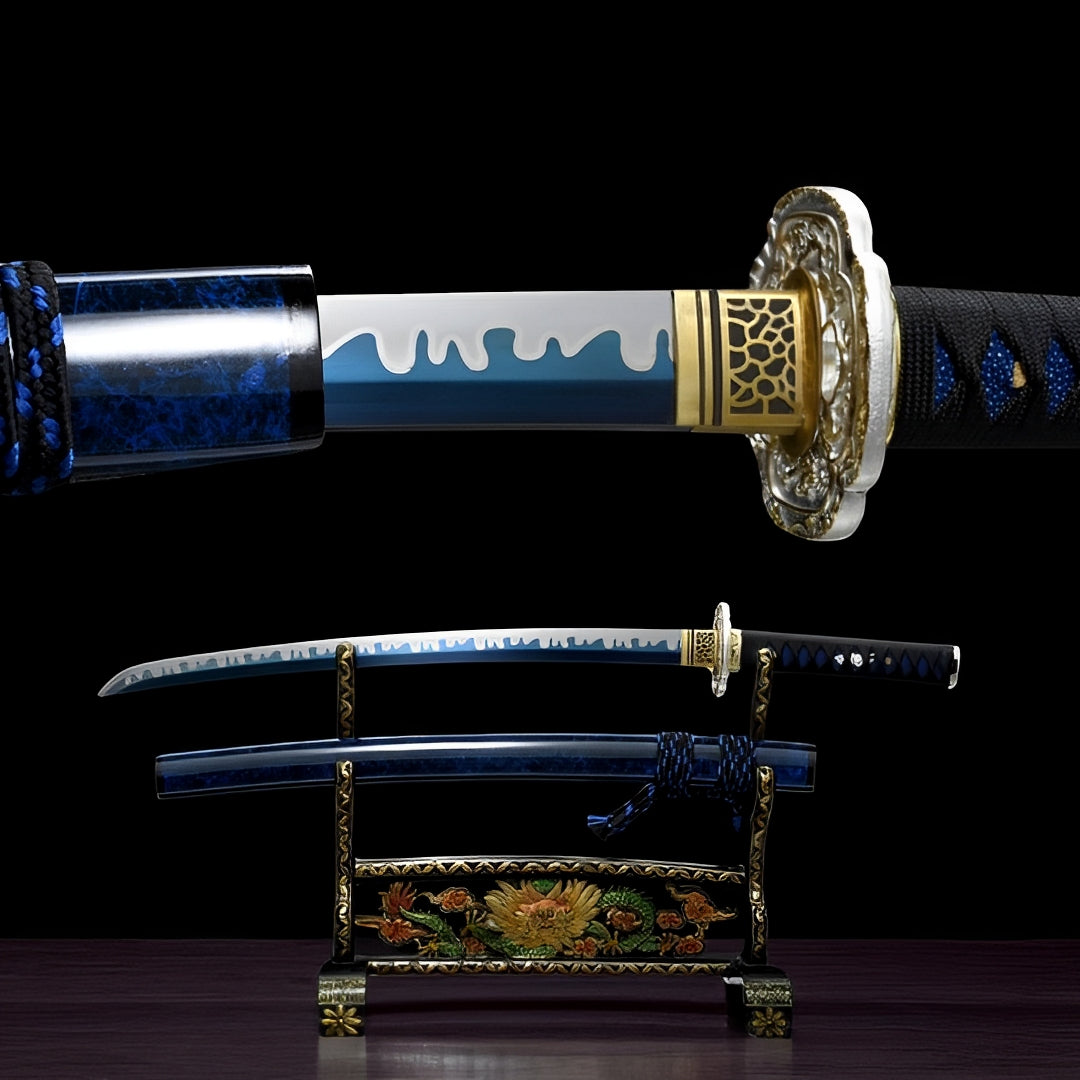
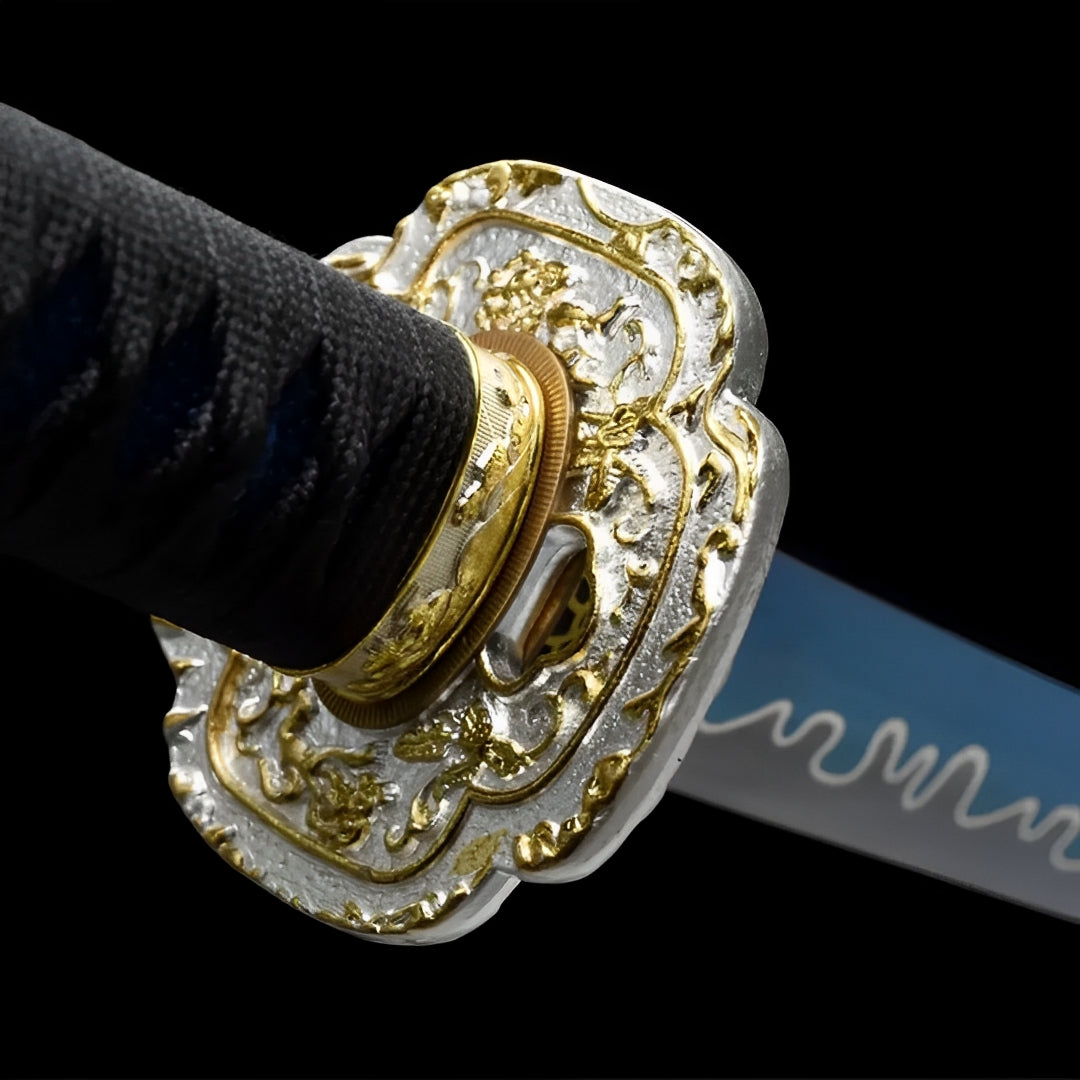
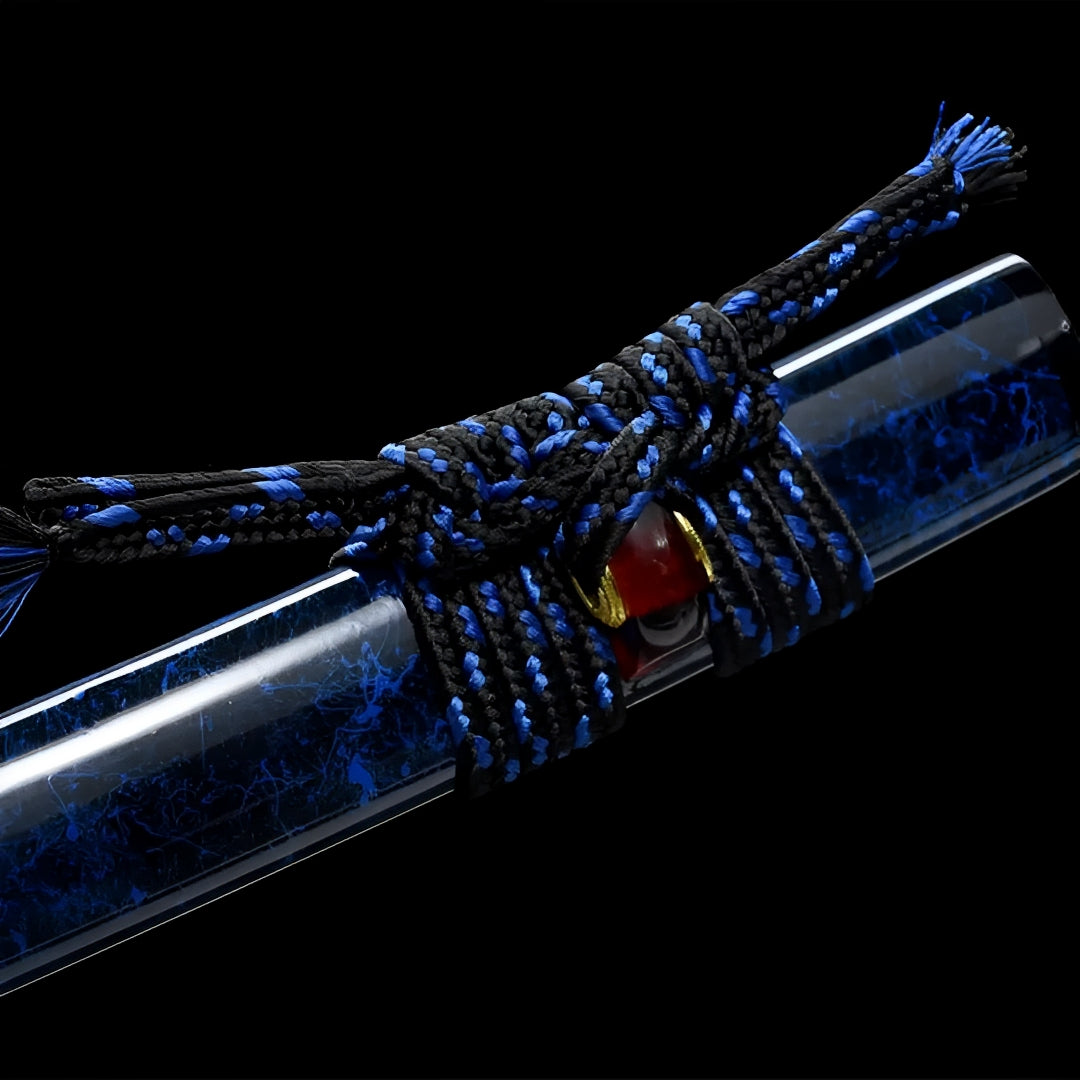
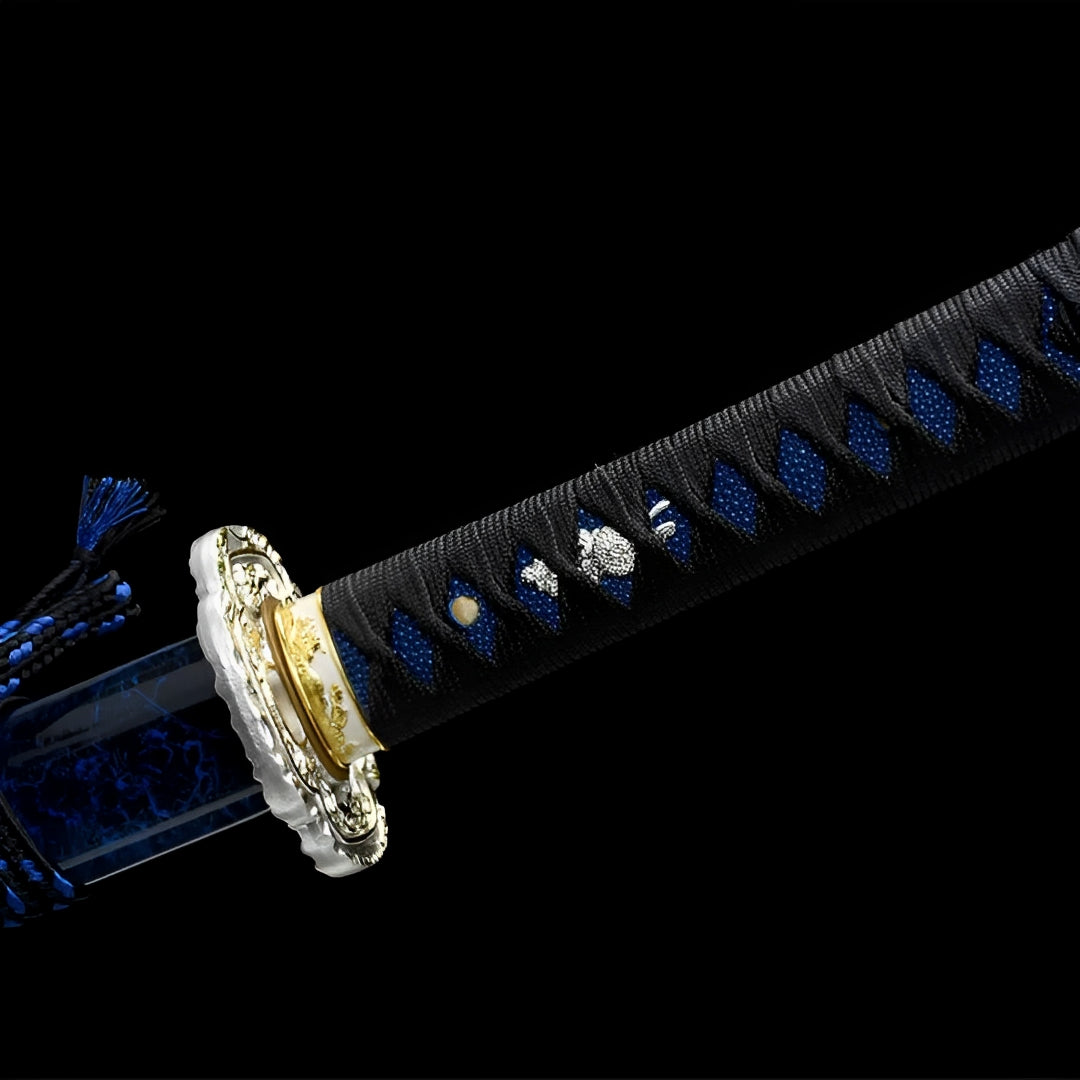
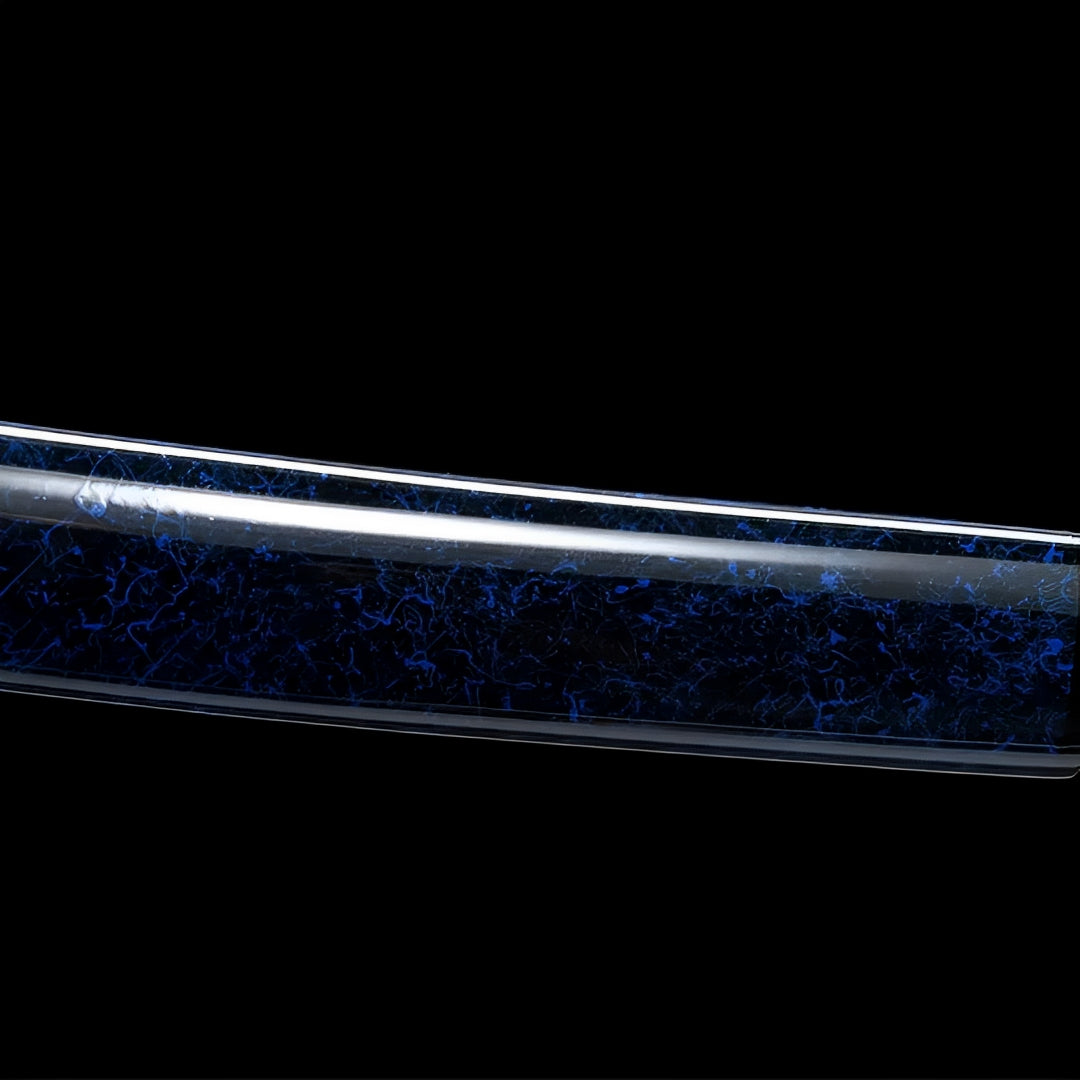
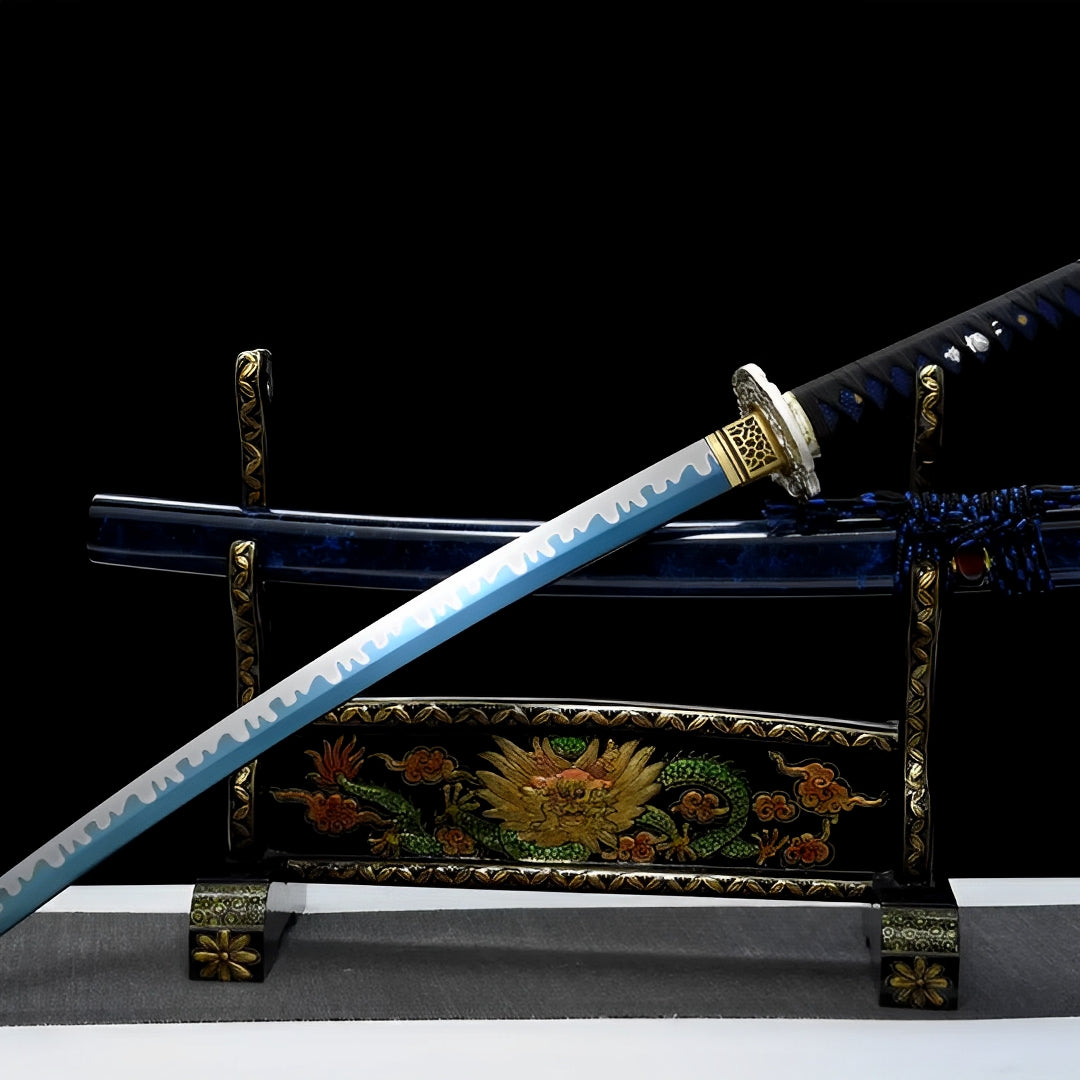
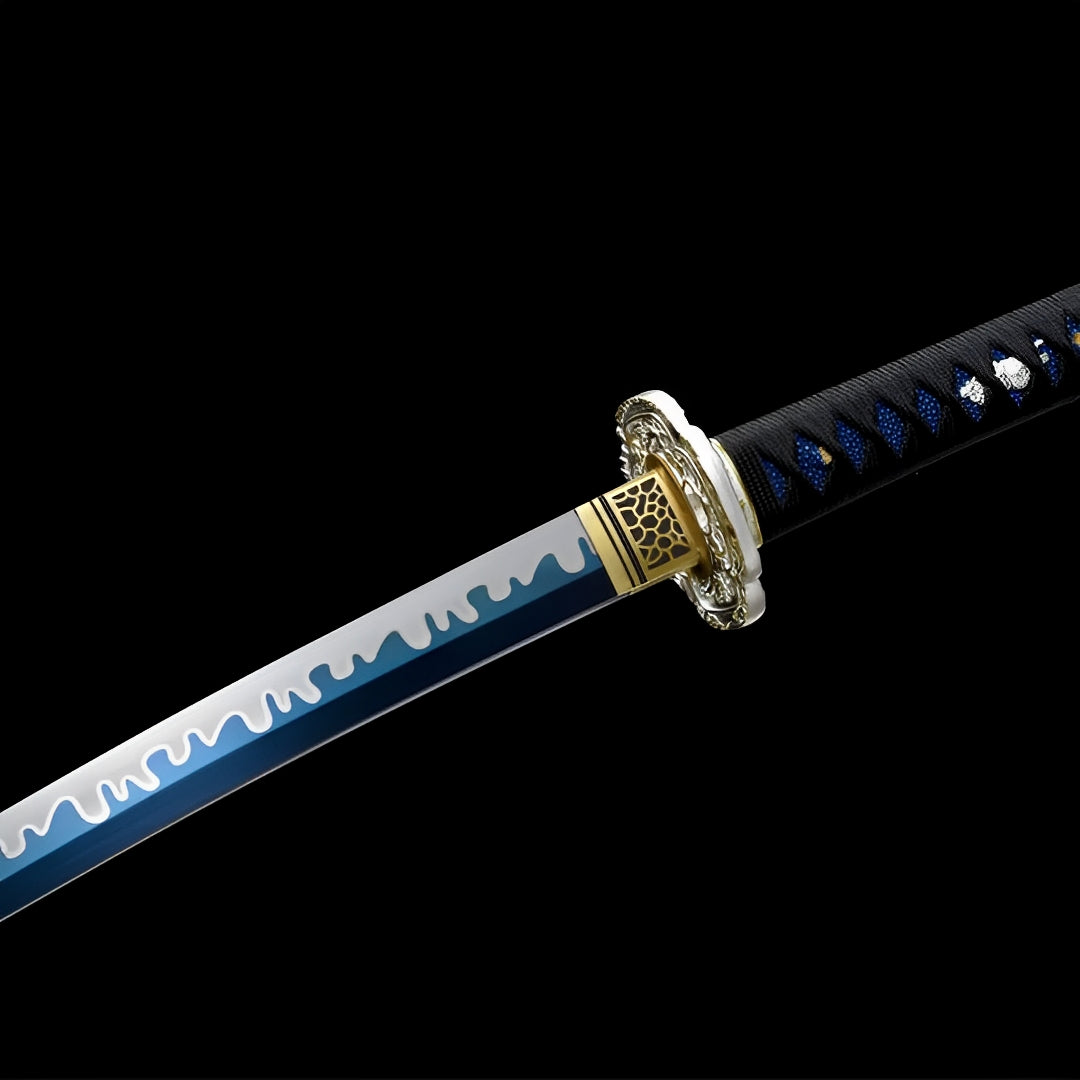
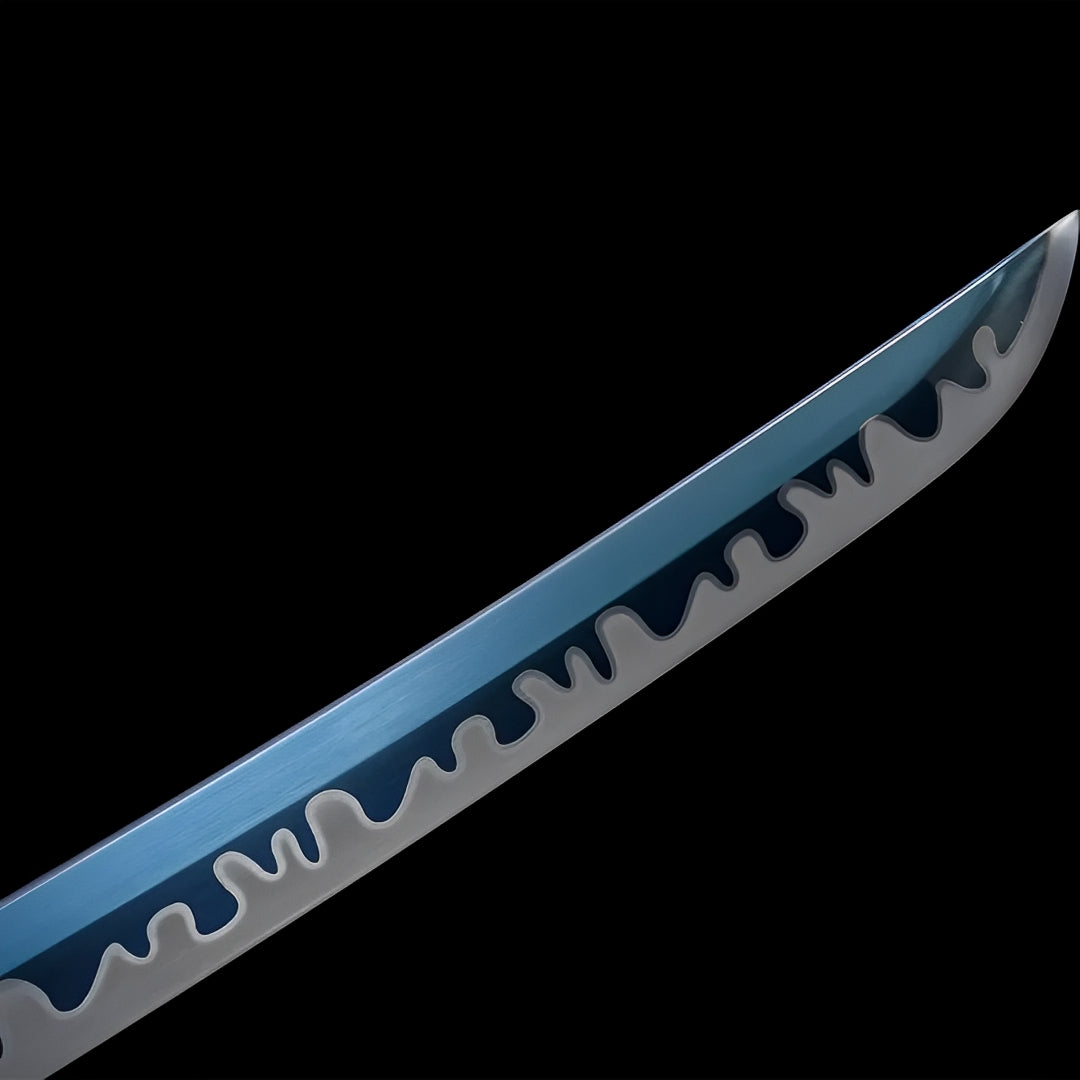
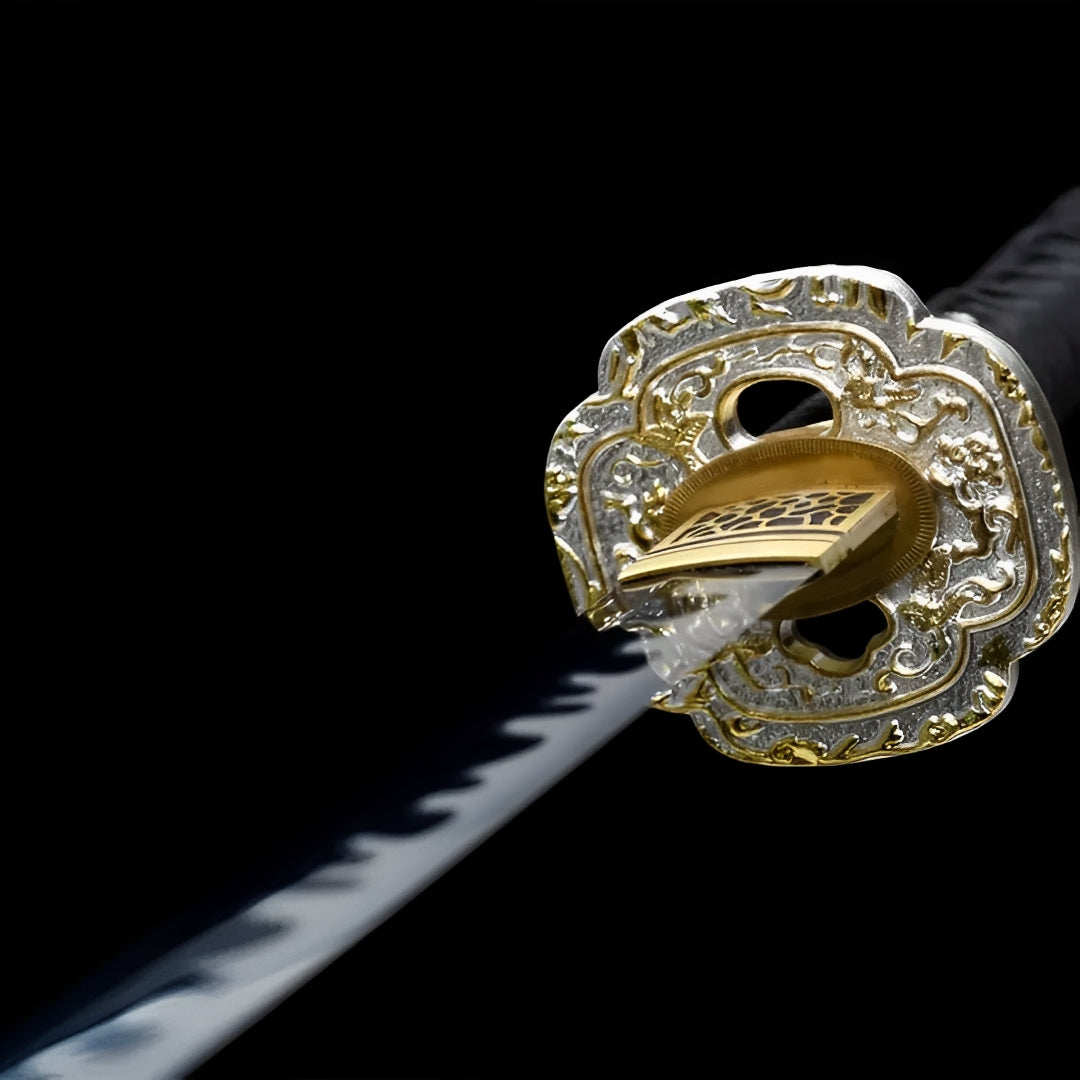
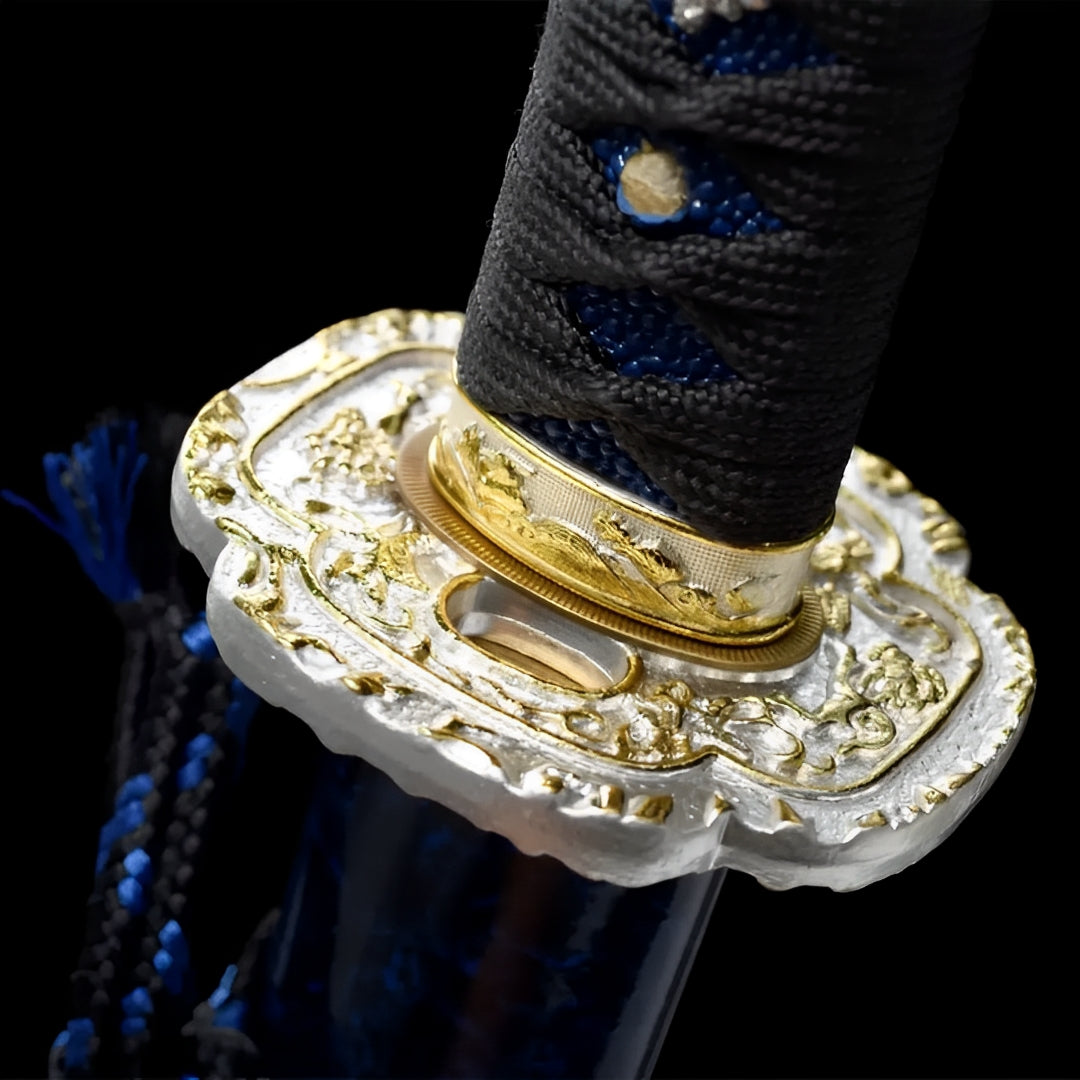
Why choose us
Ships within 48/72h
Forged Blade
Collector Quality
Trusted Globally
Inspired by Japan
Aonami Wakizashi (T10 Steel) - 青波
Popular upgrades
Free Shipping over $250
No Bots, No AI
Refund Guaranteed
Free Shipping over $250
No Bots, No AI
Our team is here to help with any questions or concerns.
We’re always happy to assist you — don’t hesitate to reach out.
Why choose us
Ships within 48/72h
Forged Blade
Collector Quality
Trusted Globally
Inspired by Japan

Aonami Wakizashi (T10 Steel) - 青波
Specifications
- Handcrafted
- SHARP blade
- Blade: Blue-treated T10 steel
- Machine-made hamon
- Sageo / ITO made of cotton
- Synthetic ray skin on the tsuka
- Lacquered solid wood scabbard
- Tsuba made of iron
- Total length: 80 cm
- Blade length: 52 cm
- Blade width: 3.5 cm
- Blade thickness: 0.7 cm
-
Handle length: 25 cm
Aonami Wakizashi - Painted Wave Companion Blade
Ride eternal tides with the Aonami Wakizashi, where ocean's rhythm flows across steel in brilliant blue waves. This lyrical Japanese companion sword transforms blade into seascape - stylized wave crests cascade along the habaki collar like foam breaking over rocks, while midnight navy saya suggests depths where light surrenders. Not weapon but meditation on water's paradox: yielding softness that carves mountains, gentle flow concealing irresistible force.
Wave Artistry Philosophy
The name Aonami (青波 - blue waves) immediately establishes this wakizashi's elemental connection. Japanese culture reveres water as ultimate metaphor for martial philosophy - Bruce Lee's famous "be like water" merely echoed centuries of samurai teachings about fluidity, adaptability, and power through non-resistance.
The blade's habaki features hand-painted or acid-etched wave patterns in brilliant azure blue against polished steel. These stylized crests reference the iconic "Great Wave off Kanagawa" aesthetic - simplified, graphic interpretation of natural phenomena where artists capture essence rather than photographic detail. Each wave crest curves with organic grace, the negative space between them as important as the blue pigment itself.
Traditional Japanese wave depictions (seigaiha - 青海波) appear throughout art history - on kimono fabrics, lacquerware, architectural details, and weapon fittings. The repeating pattern symbolizes calm persistence, endless renewal, and the cyclical nature of existence. Warriors carrying wave-patterned blades invoked water's attributes: patient erosion of obstacles, ability to flow around resistance, transformation from gentle stream to devastating tsunami when circumstances demanded.
The blue coloration technique requires exceptional skill. Applying permanent color to steel without compromising the blade's integrity or creating uneven finishes demands understanding of metallurgy, chemistry, and artistic timing. Lesser craftsmen produce muddy tones or patterns that wear quickly; master finishers create permanent artwork surviving generations.
The wave motif concentrated at the habaki (blade collar) creates visual anchor where steel emerges from tsuba guard - the moment where hidden blade reveals itself becomes moment where ocean surfaces meet air, water transforms to weapon.
Oceanic Depth Aesthetic
The deep navy saya captures ocean's mysterious character - not tropical turquoise shallows but profound depths where pressure intensifies and sunlight fades. This rich blue suggests the abyss where legendary creatures dwell, where shipwrecks rest, where mysteries remain unsolved despite centuries of human exploration.
The glossy finish creates liquid quality, as if the scabbard formed from solidified seawater or captured midnight tide. Light doesn't just reflect but seems to penetrate surface layers, revealing subtle depth that flat paint never achieves. Quality lacquerwork requires this dimensional quality - multiple thin coats building toward luminosity suggesting interior glow rather than mere surface shine.
Black ito handle wrapping features electric blue threading woven through in traditional diamond pattern, creating visual connection between the blade's azure waves and the deep navy saya. This color gradient - from brilliant wave-crest blue through midnight ocean blue to pure black - tells story of descending through water columns from sun-bright surface to lightless depths.
The blue threading serves practical function during training. Martial artists practicing in varied lighting conditions can reference the bright blue for grip confirmation, while the overall dark palette maintains tactical discretion unlike lighter-colored handles broadcasting position.
Gold hardware throughout - elaborate tsuba, fuchi collar, kashira pommel - provides warm metallic counterpoint to the cool blue palette. This combination evokes coastal sunsets where golden light reflects off darkening waters, or treasure gleaming on ocean floors, or dawn breaking over endless maritime horizons.
Dragon Guard Mastery
The tsuba demands extended admiration. This isn't simple disc but elaborate sculptural composition featuring what appears to be coiled dragon or serpentine water creature rendered in high relief with incredible detail. Traditional Japanese metalwork for sword guards represented pinnacle craftsmanship - artisans spent careers perfecting casting, chasing, and finishing techniques.
The dragon motif connects perfectly with water symbolism. Asian dragons rule aquatic realms - controlling rainfall, guarding rivers, commanding tides. Unlike Western firebreathers terrorizing maidens, Eastern dragons bring prosperity, ensure harvests, and protect righteousness. A dragon tsuba doesn't threaten but promises benevolent power held in reserve.
The golden finish suggests gilded bronze or brass - metals that develop beautiful patina as they age. New brass shines aggressively bright; aged brass mellows to warm honey tones with darker accents in recesses emphasizing three-dimensional details. Collectors debate whether polishing maintains original brilliance or allowing natural aging adds character. Both philosophies have merit.
The openwork design (sukashi - 透かし) shows negative space serving compositional purpose. The dragon's form defines itself partially through what's cut away rather than only through solid metal. This sophisticated approach to positive/negative space relationships demonstrates aesthetic maturity - amateur craftsmen fill every millimeter with detail, masters know when emptiness communicates more powerfully than presence.
Quality tsuba should feel balanced when the sword rests in hand - substantial enough confirming solid construction, shaped ergonomically allowing comfortable grip positioning, weighted preventing the blade from feeling tip-heavy or handle-heavy during use.
Maritime Heritage Connection
Throughout Japanese history, coastal clans and naval forces developed distinct sword preferences reflecting their aquatic environment. Pirates (wakō) prowling trade routes, samurai stationed at port fortifications, and merchant mariners protecting cargo all understood that maritime combat presented unique challenges.
This naval wakizashi embodies that seafaring warrior tradition. The water symbolism isn't decorative affectation but cultural connection to those who lived, fought, and died where land met sea. Modern collectors appreciating this historical context see beyond pretty blue waves to recognize genuine heritage resonance.
The ocean's dual nature - provider of food and trade routes, destroyer through storms and drowning - mirrored the wakizashi's role in samurai life. Most days it hung peacefully at the warrior's side, but circumstances could transform it instantly into instrument of survival or death. The blade remained constant; only context shifted.
Japanese maritime warriors developed specialized techniques for shipboard combat where footing proved uncertain, confined spaces prevented full swings, and saltwater spray threatened weapon integrity. The wakizashi's intermediate length made it ideal for fighting in cramped quarters below decks or on pitching surfaces during storms.
The Aonami's refined aesthetics suggest it served ceremonial rather than purely utilitarian role - possibly presentation piece commemorating naval service, retirement gift honoring maritime career, or commissioned blade celebrating clan's coastal heritage and fishing traditions providing prosperity.
Fluid Collection Integration
This ocean-themed wakizashi attracts collectors drawn to water symbolism, Japanese nature aesthetics, maritime history, or anyone seeking pieces balancing beauty with philosophical depth. The Aonami proves that weapons can embody elemental forces while maintaining their essential purpose.
The deep blue and gold color scheme coordinates beautifully with varied display contexts. Coastal homes appreciate the obvious nautical connection. Modern interiors enjoy the sophisticated navy palette. Traditional Japanese rooms welcome the cultural authenticity. Even landlocked collections benefit from the Aonami's reminder that warrior philosophy drew lessons from natural phenomena.
Display options should emphasize the water theme. Consider blue-toned lighting suggesting underwater environments. Pair with scroll paintings depicting ocean scenes. Include the ornate display stand whose floral motifs (possibly chrysanthemums in gold and coral) provide terrestrial contrast to the aquatic blade, suggesting the liminal zone where land meets sea.
Perfect for collectors specializing in elemental-themed weapons, martial artists studying fluid movement techniques, Japanese art enthusiasts appreciating nature motifs, interior designers curating coastal or nautical spaces, historians focusing on maritime samurai traditions, or anyone understanding that greatest weapons taught philosophical lessons transcending mere combat application.
The Aonami particularly appeals to those who've collected aggressive, martial pieces and now seek blades embodying softer power - the water warrior philosophy teaching that yielding defeats rigidity, patience outlasts aggression, and adaptation ensures survival when inflexibility guarantees destruction.
Care Instructions: Clean the painted wave details gently to preserve blue coloration. The navy saya benefits from soft cloth dusting maintaining glossy finish. Oil the blade following standard protocols. Polish golden fittings periodically with appropriate metal care products. Store in climate-controlled environment as humidity extremes threaten both steel and decorative finishes. The ocean theme demands ironic protection from actual moisture.
Flow with the tide. The Aonami Wakizashi teaches water's eternal lessons.
Legal Disclaimer
By purchasing from Katana Corp, you acknowledge and agree that:
- You are at least 18 years of age (or the age of majority in your jurisdiction).
- You are solely responsible for verifying and complying with all local laws and import regulations before placing an order.
- Some countries prohibit the importation of swords entirely. Katana Corp is not responsible for orders delayed, seized, or refused by customs authorities.
- All katanas and related products are sold strictly as decorative and display items. They are not intended or certified for combat use.
- Depending on the jurisdiction, swords may legally be considered bladed weapons, subject to specific restrictions or prohibitions.
- Katana Corp disclaims all liability for any injury, damage, or legal consequences resulting from misuse, abuse, or unlawful use of its products.
For full details, please refer to our Terms of Service.
Care & Maintenance
To maintain your katana's appearance and performance over time, we recommend:
- Regularly wiping the blade with a soft cloth to remove fingerprints and moisture.
- Applying a light coat of choji oil to prevent rust (for carbon steel blades).
- Storing the sword in a dry place, preferably inside its saya.
- Avoiding direct contact with hard surfaces to preserve sharpness and finish.
For more care tips, check our full maintenance guide in the FAQ section.
Behind the Blade
Every katana we offer carries the essence of centuries-old craftsmanship.
More than just a weapon, the katana symbolizes discipline, honor, and mastery.
Our artisans draw inspiration from traditional forging methods to ensure each blade reflects the spirit of the samurai — strength, precision, and soul.
Owning one is not just about aesthetics — it’s about carrying a piece of that legacy.
User Experience
This katana is designed to offer a perfect balance between blade and handle.
Its ergonomic tsuka (handle) allows a secure two-handed grip, while the weight distribution ensures smooth, fluid movement.
Whether for training, display or cutting practice, handling feels natural and precise.
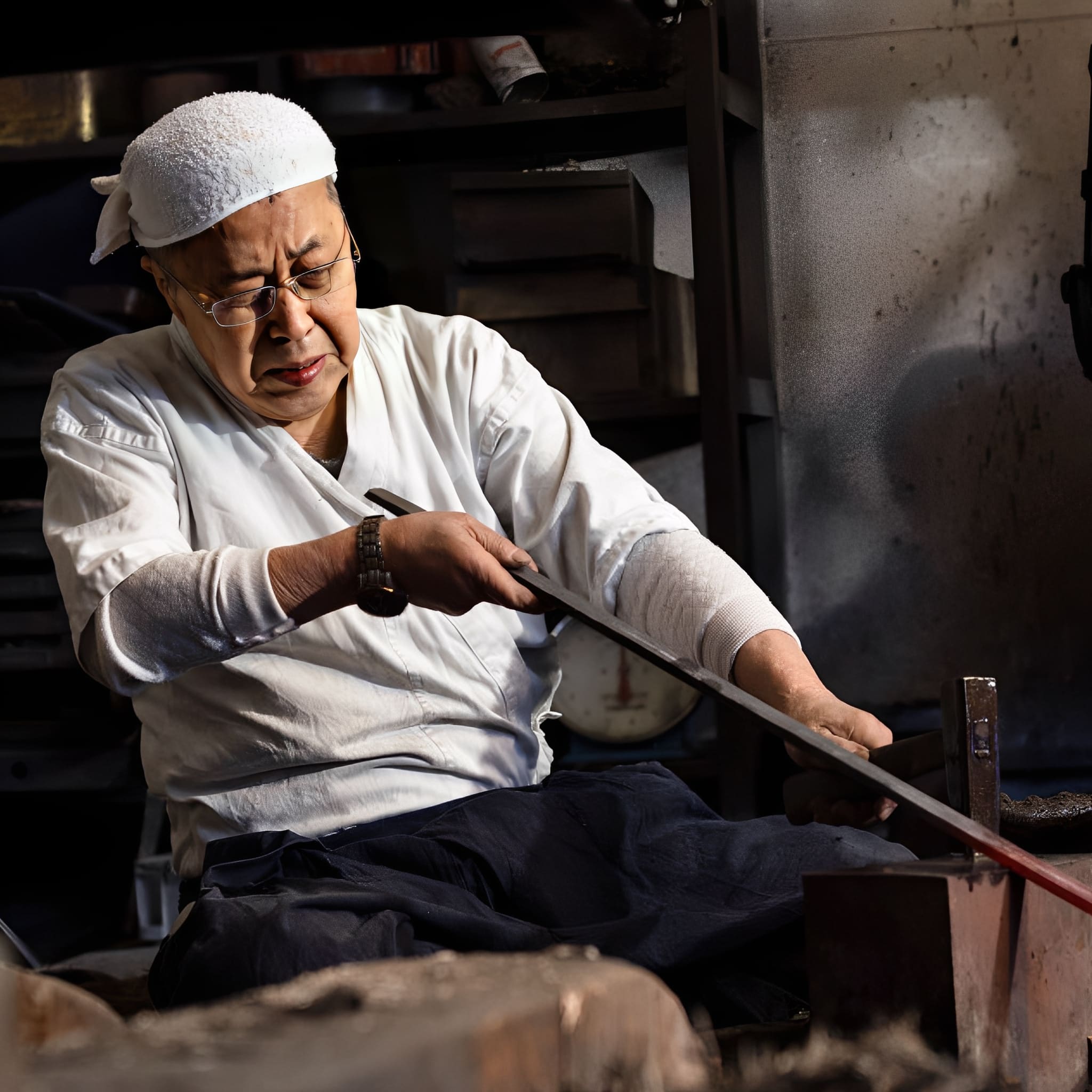
The Art of Traditional Forging
Each katana we craft is born from centuries of samurai tradition.
Our master smiths shape every blade by hand, folding the steel to achieve unmatched strength, flexibility, and beauty.
This time-honored process is not just about creating a weapon? it’s about preserving a legacy of discipline, honor, and artistry.
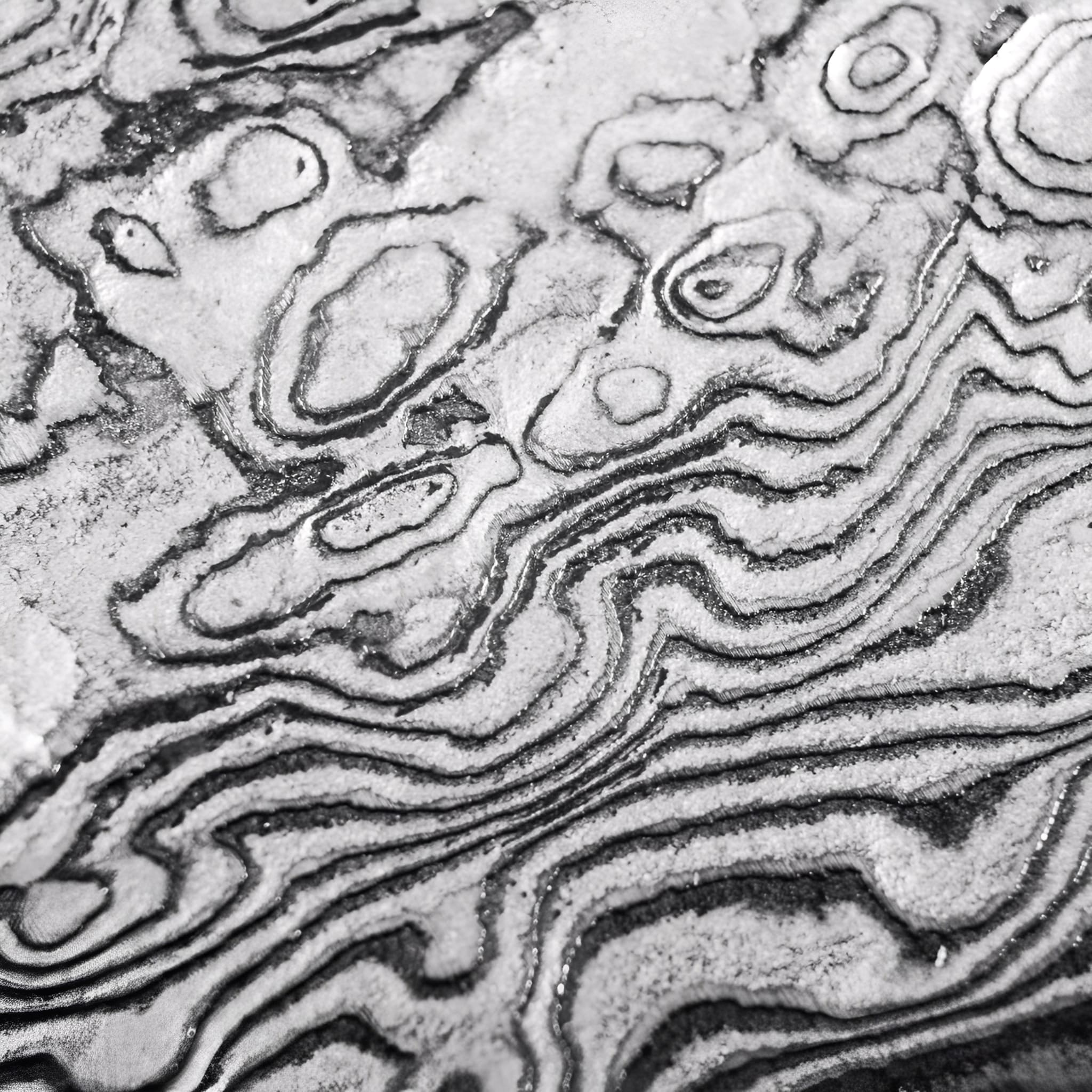
Materials Chosen Without Compromise
We select only the highest-grade steels and authentic fittings to ensure every katana is both a masterpiece and a reliable companion.
From the flawless hamon line to the perfectly balanced tang, each detail is carefully inspected to meet the highest standards of performance and aesthetics.
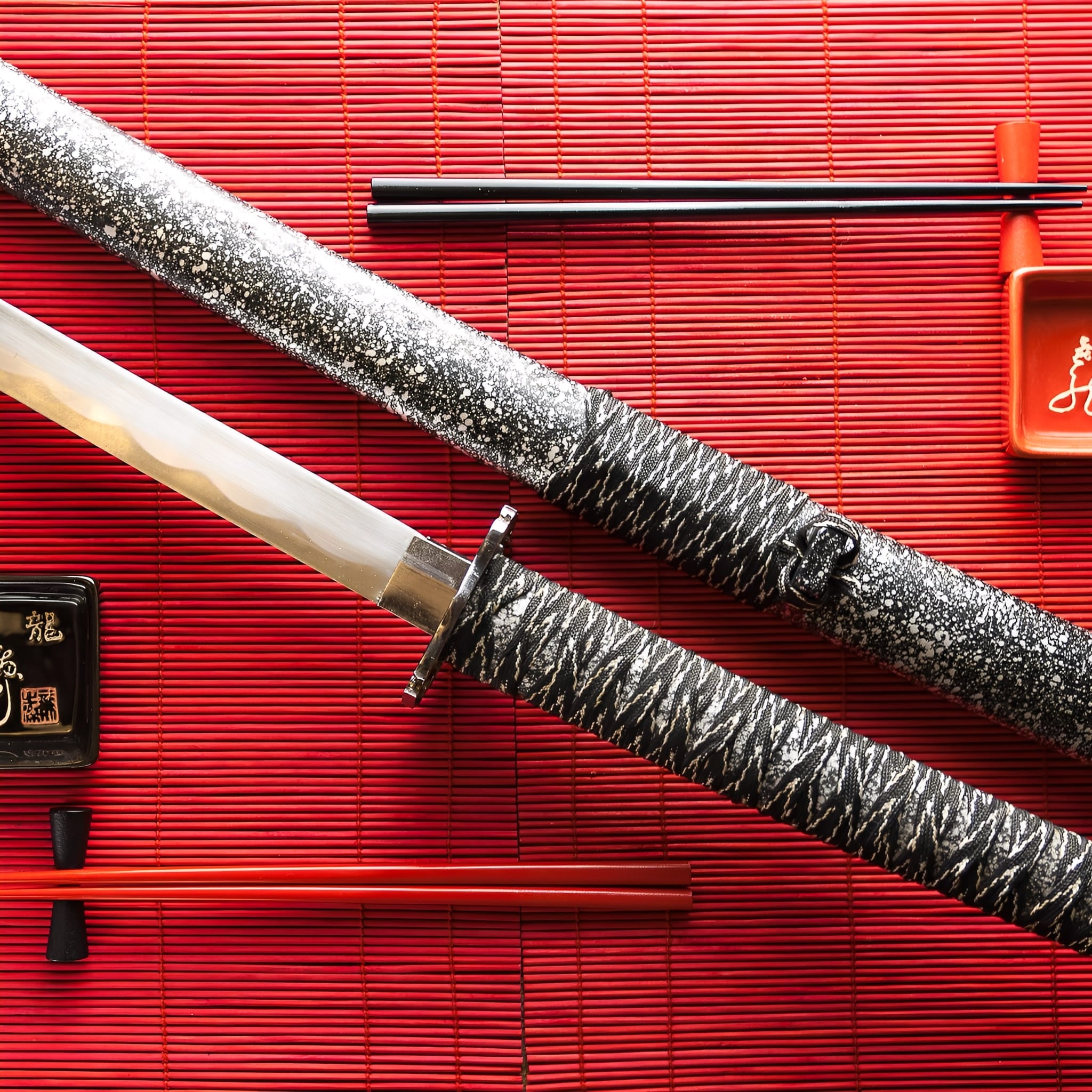
More Than a Sword, A Lifelong Legacy
Owning a handmade katana is an experience that goes beyond the blade itself. It’s holding history, tradition, and craftsmanship in your hands.
Whether displayed as a work of art or wielded with precision, your katana will stand as a symbol of timeless skill and dedication for generations to come.
-
Key Destinations
United States: 5–7 days
Canada: 5–7 days
Australia: 6–9 days
Denmark: 4–6 days
Netherlands: 3–5 days
Sweden: 4–6 days
Switzerland: 3–5 days
Finland: 5–7 days
Singapore: 6–8 days -
Central European Partners
France: 2–3 days
Germany: 3–5 days
Spain: 4–6 days
Italy: 4–6 days
Belgium: 3–5 days
Austria: 4–6 days
Ireland: 4–6 days
Poland: 4–6 days
Portugal: 4–6 days -
Extended EU Network
Czechia: 4–6 days
Hungary: 4–6 days
Slovakia: 4–6 days
Slovenia: 5–7 days
Romania: 5–7 days
Bulgaria: 5–7 days
Croatia: 5–7 days
Serbia: 5–7 days
Estonia: 5–7 days
Latvia: 5–7 days
Lithuania: 5–7 days
Luxembourg: 3–5 days
Greece: 5–8 days -
FAQ’s
Visit our FAQs page to find answers to common questions.